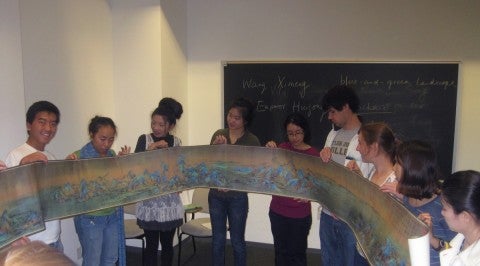“Like Hearts of Birds:
Ottoman Microarchitecture and the Avian Turn”
In Istanbul and further afield, Ottoman mosques and other structures have been chirping ever since the sixteenth century. Their stone walls emit the rustle, call, and song of the birds that perch on their domes, sit on their ledges, and take up residence in Lilliputian edifices whose forms mimic the built environment of the humans ambling below. These purpose-built microarchitectural domiciles—known in Turkish as “bird houses” (kuş evleri) and “bird palaces” (kuş sarayları)—were a staple of eighteenth-century mosque construction in particular. Their undulating architectonic forms and exuberant sculptural styles place them squarely within the Ottoman Baroque, a “new style” (nev-i cedid) that playfully combines both local and global architectural traditions and the natural environment itself. The terms of reference, however, do not halt there. The bird houses transcend both model and miniature, man and nature, to act as fantastical structures whose major metaphor is the avian world. Indeed, often affixed to the qibla walls of mosques—which direct devotees towards prayer and thus salvation—these small but impressive structures give form to the famous Hadith (Saying) of the Prophet Muhammad: “There would enter Paradise people whose hearts would be like those of the hearts of birds.” Flying high and packed with the promise of enduring life, these soaring pavilions attest to the power of faunal provision and metaphor, of an avian turn in architecture whose lessons seem ever more urgent as bird populations collapse across the world today.
====================
Christiane Gruber is Chair and Professor of Islamic art in the History of Art Department at the University of Michigan, Ann Arbor. Her primary field of research is Islamic book arts, paintings of the Prophet Muhammad, and Islamic ascension texts and images, about which she has written three books and edited several volumes of articles. She also pursues research in Islamic book arts and codicology, having authored the online catalogue of Islamic calligraphies in the Library of Congress as well as edited the volume of articles entitled "The Islamic Manuscript Tradition." Her third field of specialization is modern Islamic visual and material culture, about which she has written half a dozen articles. She also has co-edited two volumes on Islamic and cross-cultural visual cultures. Her most recent publications include her book "The Praiseworthy One: The Prophet Muhammad in Islamic Texts and Images" and her edited volume "The Image Debate: Figural Representation in Islam and Across the World," both published in 2019.

